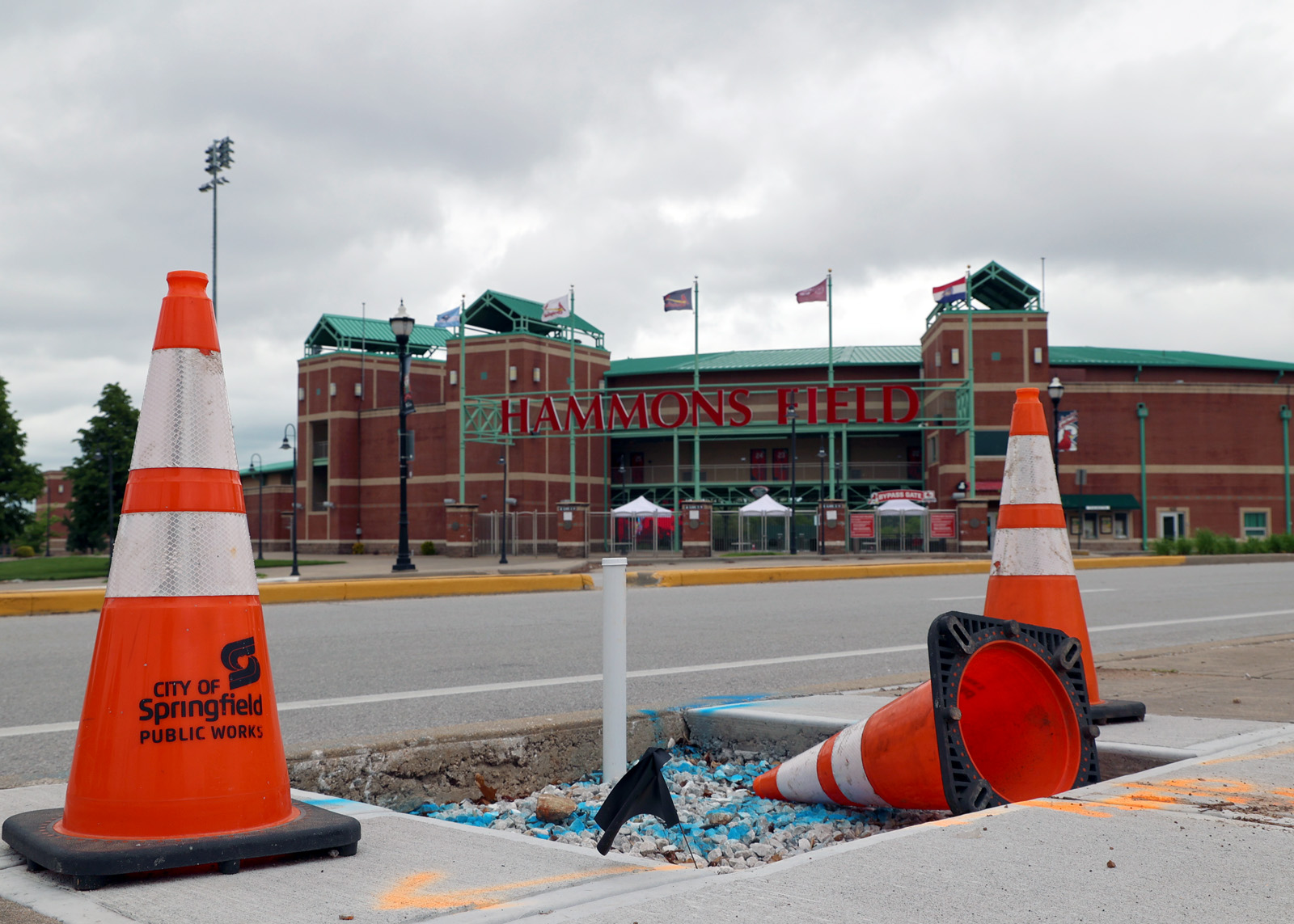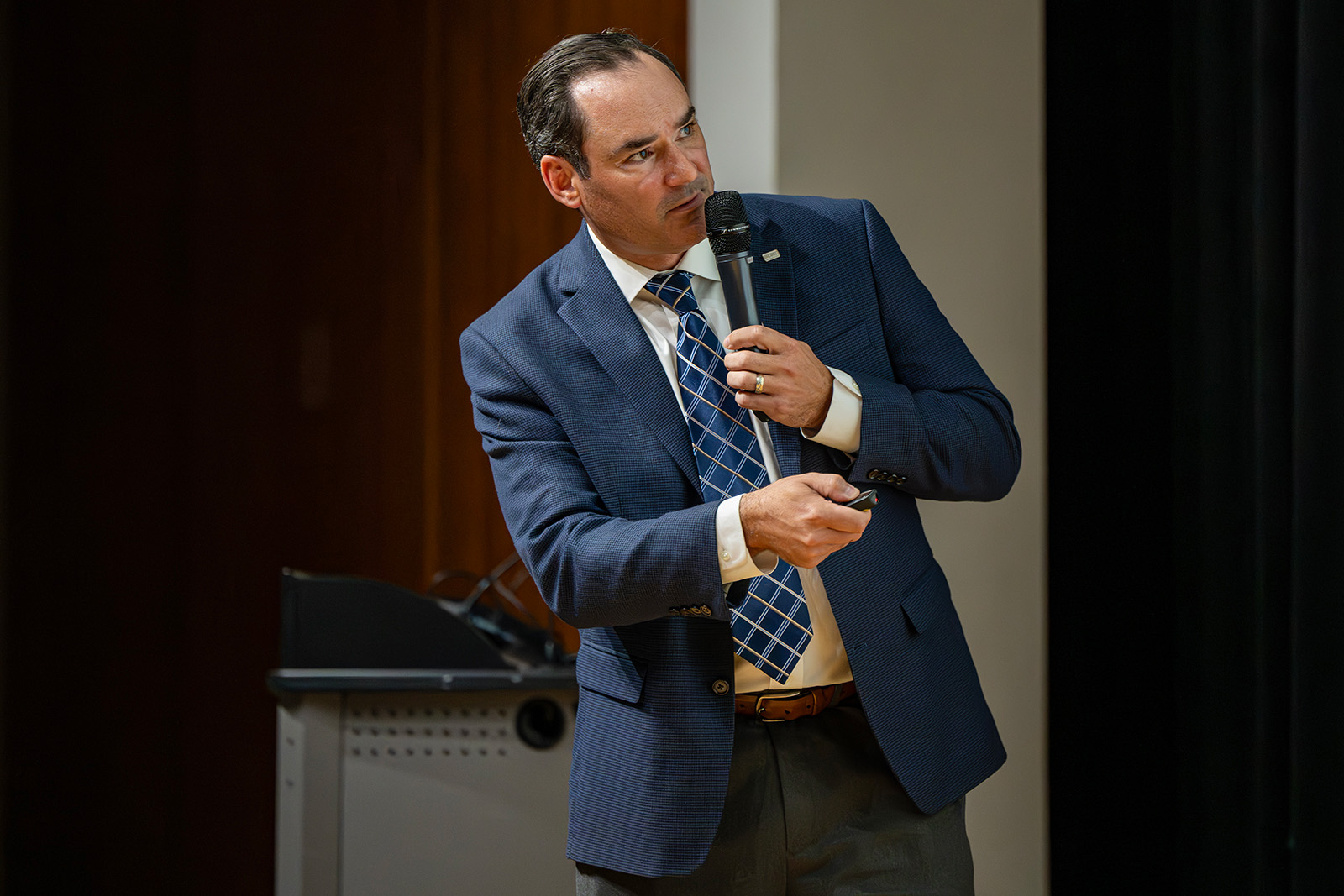Contending with a looming deadline, Springfield’s new tax commission made some progress in its fourth meeting, but still has work to do before providing the City Council a recommendation on a tax measure by the end of June.
The 30-member commission was formed to provide the City Council a report and recommendation for a potential sales tax measure — to replace the expiring ¾-cent pension sales tax — to put before Springfield voters in the November 2024 election.
After holding a straw poll, the Citizens’ Commission on Community Investment largely agreed to move forward with a ¾-cent tax proposal, but struggled to find consensus on the sunset of the tax measure.
Commission members seem to agree on the need for the tax measure to cover ongoing, but waning obligations to the city’s police and firefighters’ retirement system. While generally supportive of the tax funding other needs across the city, they grappled with how to prioritize and group those needs.
In its remaining two meetings, the commission will draft the ballot language and finalize a report to provide to the City Council, which faces an August deadline to put the measure on the November ballot.
Commission considers needs of city departments, pension

With less than three months to develop a recommendation, the commission began deliberations in earnest on April 16, spending most of the first three meetings getting up to speed on the history of the pension system, public support for different projects and initiatives and the financial fallout the city faces without a new revenue source.
Commission members also heard from leaders of the Springfield Police Department, the Fire Department, the Public Works Department and the Springfield-Greene County Park Board on the funding shortfalls and needs of their respective departments, and the potential projects and programs that could be funded under a new tax.
In addition to the community input collected through a 2023 public engagement campaign, the commission is also guided by the broad consensus of the City Council to fund ongoing pension obligations, public safety initiatives and the transformative projects outlined in the city’s comprehensive plan, Forward SGF.
Broad categories key to flexibility
Based on previous discussions of the City Council, results of community surveys, and the priorities of the commission, city staff compiled a list of subcategories that could be folded into the tax measure:
- Remaining Police Officers’ and Firefighters’ Retirement System obligations;
- Police/Fire public safety initiatives;
- Safe and healthy neighborhoods;
- Roads, bridges, sidewalks, stormwater and capital improvement projects;
- Jobs and economic vitality;
- Parks, recreation and trails;
- Beautification of public spaces;
- Facilities, vehicles, equipment, maintenance.
While funding the pension system through a new tax is a no-brainer for the commission, how to fund the other categories is more divisive, particularly in terms of the specificity of the ballot language and the potential sunset to a tax measure.

Tom Prater, who co-chairs the commission with Phyllis Ferguson, cautioned against listing specific projects in the ballot measure, to not bind the city in the event it receives funding from other sources for those projects, citing the state funding awarded for the rehabilitation of the Jefferson Avenue Footbridge and the $10 million currently appropriated for the Springfield Art Museum.
“If you start listing projects, and then all of a sudden another funding source comes up, then is that a good thing or a bad thing?” Prater said. “That's why we step back a little bit and try to make this a little broader.”
Ongoing public input
Cora Scott, the city’s director of public information and civic engagement, noted that the city could regularly collect public input on how the revenues are spent, similarly to how the city determines what projects to fund with the ¼-cent capital improvement sales tax and ⅛-cent transportation sales tax, which were both last approved with a 20-year sunset.
“There is nothing in the ballot language that required that to happen,” Scott said. “But as a commitment to the accountability, the city is following the same processes that we would follow if it were coming up for a renewal. In fact, all of the communication and input gathering efforts are the exact same as if we were coming back for a renewal.”
Too many categories could “dilute” impact, support of tax measure
Commission members were also wary of the number of categories presented, and emphasized the need to consolidate or narrow them down in the ballot language.

“We know these eight are too big,” Ferguson said. “They’re unwieldy, and we need to bring it down to something a lot more succinct than this. But these are the things that we have to figure out how to package and present at the ballot so that people will easily understand it, that it's transparent to them, what we're going to do…and then get it across the finish line.”
Andrew Zinke, a Springfield police officer and the president of the Springfield Police Officers Association, said “the more we dilute this down, the less transformational it becomes,” and suggested putting the bulk of revenues into public safety initiatives.
While other commission members shared concerns with diluting the impact of a new tax — or risking the success of a tax measure at the ballot box — with too many categories, many voiced their support for a tax measure to fund public infrastructure, quality of place projects and the vision of Forward SGF.
$45 million only a “spark”
Steve Prange, a project manager and senior vice president at Crawford, Murphy & Tilly, emphasized that the $45 million in annual revenue a ¾-cent tax is estimated isn’t nearly enough to what’s needed to “make a dent” in the comprehensive plan.

“I don’t think it’s going to come close,” Prange said. “So my fear is that you send this to a ballot saying ‘this is the spark to Forward SGF.’ It’s the beginning, it’s not a fire, and we're going to need more to really implement this. So as part of our charge here, to say ‘yeah this is what's going to spark this,’ but to send a strong message to the voters that, to really implement this, we're going to need more than just this re-look at the ¾-cent.”
Support, concern for sunset date
Though it remains unclear what kind of sunset — if any — a tax measure might have, a majority of the commission expressed support for a sunset sometime between 10 and 20 years after the would-be tax goes into effect.
While commission members’ reasons for or against a sunset varied, they acknowledged the time it takes for major capital projects to come to fruition and the complication of sunsetting a tax that could fund personnel costs associated with public safety initiatives, and requested an opinion from the city’s law department on if a portion of the tax could sunset while the remainder continues in perpetuity.
Though several commission members expressed concern with conclusions being drawn from previous straw polls, and a desire for more clarity on the consensus of the commission, Ferguson emphasized the short timeline they have to develop a recommendation, and noted that the decision on what to put before voters ultimately rests with the City Council.
“Is this a perfect solution to the problem? No,” Prater added. “Are we going to give our best effort to what we want Council to hear and what we hope they'll accept? Yes.”

